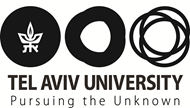Medium and History: Old Media, New Media, Screens and Differences
Medium and History: Old Media, New Media, Screens and Differences
Noam Yuran
Syllabus Marshall MacLuhan's famous claim "the medium is the message," suggests that the deepest effects of a medium on human reality are entailed with its transparency. These are the effects that lay hidden from our eyes as users of the medium. However, there are moments when a medium is extracted from its transparency and revealed more clearly to our gaze. Such moments typically occur in the encounter between different media. The emergence of a new medium sheds new light on older media and exposes them in new ways. During the course, we will use this insight to study the entanglement of visual media with 20th century history. We will study how visual media – photography, television and the internet – shape human reality: how they change our worldview, our interactions with others, our sense of belonging to communities, societies and states. We will learn about the convergence of media, but also about their differentiation. We will explore the differences between media in various dimensions: their sociability, their politics, the different forms of identification they invoke, and the different ontological status of the visual image in them. We will study media through various phenomena: celebrities, reality TV, social networks, disaster images, selfies and more.
Classes
1-2. The concept of medium and the medium of photography
McLuhan, Marshall. Understanding media: The extensions of man. MIT press, 1994.
André Bazin. "The ontology of the photographic image." Film Quarterly 13.4 (1960): 4-9.
3-4. The world according to television. Simulation.
Postman, Neil. Amusing ourselves to death: Public discourse in the age of show business. Penguin, 2006.
Bourdieu, Pierre. On Television. Free Press, 1998.
Baudrillard, Jean. Simulacra and simulation. University of Michigan press, 1994.
5-6. Television as a form of being together: polysemy and ritual
Fiske, John. "Television: Polysemy and popularity." Critical Studies in Media Communication 3.4 (1986): 391-408.
Nick Couldry, Media Rituals: a Critical Approach, London: Routledge, 2003
7-8. Stars, celebrities and ordinary people: different forms of sociability
Daniel J. Boorstin, The Image, or, What Happened to the American Dream, Harmondsworth, Middlesex: Penguin, 1963
P. David Marshall, Celebrity and power: Fame in contemporary culture. University of Minnesota Press, 1997.
Graeme Turner, Ordinary people and the media: The demotic turn. Sage Publications, 2010.
Mole, Tom. "Hypertrophic celebrity." M/C Journal 7.5 (2004).
9-10. Social networks: privacy, identification and exposure
John Suler, "The online disinhibition effect." Cyberpsychology & behavior 7.3 (2004): 321-326.
Dylan E. Wittkower, "Social Media and the Organization Man." APA Newsletter on Philosophy and Computers 14.2 (2015).
James Grimmelmann, "The privacy virus." Facebook and philosophy (2010): 1-12.
11-12. Digital photography: image, reality and catastrophe
Marry Ann Doane, “Information, Crisis, Catastrophe”, in Patricia Mellencamp (ed.) Television: Essays in Cultural Criticism, London: BFI Publishing, 1990, pp. 222-39
Arild Fetveit, "Reality TV in the digital era: a paradox in visual culture?."Media, Culture & Society 21.6 (1999): 787-804.
Nichols, Bill, Blurred Boudaries: Questions of Meaning in Contemporary Culture, Bloomington: Indiana University Press, 1994, pp. 43-62
13-14. Convergence culture
Henry Jenkins, Convergence culture: Where old and new media collide. NYU press, 2006.
Lev Manovich, The Language of New Media, Cambridge MA: MIT Press, 2001
15-16. Reality TV: television as a new media
Corner, John. "Performing the Real Documentary Diversions." Television & New Media 3.3 (2002): 255-269.
Nichols, Bill. Blurred boundaries: Questions of meaning in contemporary culture. Indiana University Press, 1994.
17-18. The economy of the visual image
Debord, Guy. Society of the Spectacle. Bread and Circuses Publishing, 2012.
Assignments
1. Mid-term paper: one page response to a text from the syllabus (15%)
2. Final paper: six pages analysis of a media text (85%)
3. Up to 10 points bonus for an active participation in the class

